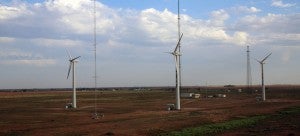 Back in March, I wrote about the American Legislative Exchange Council’s (ALEC’s) state-by-state attack on renewable energy. The attacks contribute to ALEC’s growing reputation as a “shadowy right-wing front group,” funded by the likes of Koch Industries, ExxonMobil and Peabody Energy, the largest private-sector coal company in the world. ALEC’s legislative efforts were aided by the Heartland Institute, a “free-market think tank” and notorious climate change denier.
Back in March, I wrote about the American Legislative Exchange Council’s (ALEC’s) state-by-state attack on renewable energy. The attacks contribute to ALEC’s growing reputation as a “shadowy right-wing front group,” funded by the likes of Koch Industries, ExxonMobil and Peabody Energy, the largest private-sector coal company in the world. ALEC’s legislative efforts were aided by the Heartland Institute, a “free-market think tank” and notorious climate change denier.
ALEC has a clear motive: to serve the interests of dirty fossil fuel power plants and block progress towards greater use of clean, homegrown energy.
I’m happy to announce that ALEC and the Heartland Institute’s efforts to roll-back individual state’s renewable energy goals decisively failed in legislatures spanning from West Virginia to Kansas. In total, 26 bills designed to remove renewable energy standards (RPS) for eight states were denied, according to a report from Colorado State University’s Center for the New Energy Economy.
Now, Kansas, Missouri, Ohio, North Carolina, Texas, West Virginia and Wisconsin will continue on the path towards a clean energy future. Even better, some states increased their energy guidelines, namely Colorado, Connecticut, Maryland and Minnesota.
This news comes as a resounding victory for the climate, consumers, and Americans who care to see the U.S. progress into the global $ 2 billion clean energy economy. Read More













